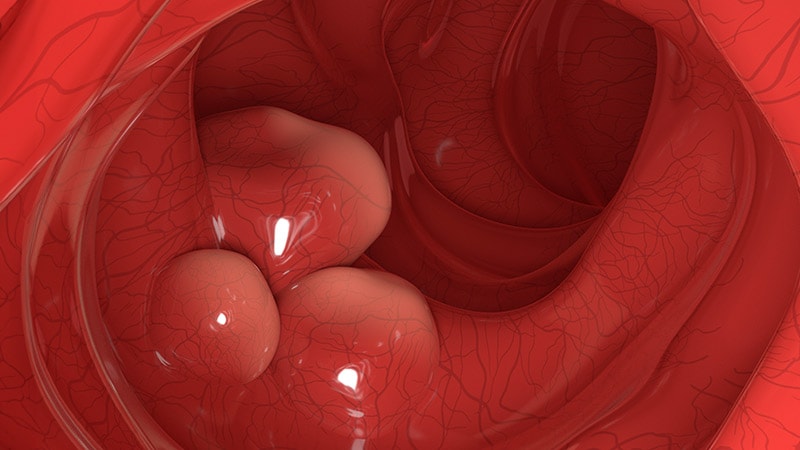New CRC Risk Prediction Model Outperforms Polyp-Based Model
Core Concepts
A comprehensive model incorporating patient age, diabetes, colonoscopy indications, and polyp findings is more accurate in predicting colorectal cancer risk than a polyp-based model.
Abstract
TOPLINE:
Comprehensive model predicts CRC risk more accurately than polyp-based model.
METHODOLOGY:
Developed a risk prediction model considering patient characteristics and clinical factors.
Model included colonoscopy indication, age group, diabetes diagnosis, and specific polyp findings.
Tested on 95,001 patients with a first adenoma diagnosis.
TAKEAWAY:
Comprehensive model outperformed polyp-based model in predicting CRC.
Demonstrated better performance in both development and validation cohorts.
IN PRACTICE:
Inclusion of CRC risk factors beyond polyp findings can enhance risk stratification post-colonoscopy.
SOURCE:
Study led by Jeffrey K. Lee, MD, MPH, published in The American Journal of Gastroenterology.
LIMITATIONS:
External validation required in different practice settings.
Generalizability limited due to study population exclusions.
Incomplete data prevented examination of polyp size > 20 mm.
New CRC Risk Prediction Model Outperforms Polyp-Based Model
Stats
During the follow-up period, 495 patients were diagnosed with CRC.
The comprehensive model had an AUC of 0.71 in the development cohort and 0.7 in the validation cohort.
The difference in the Akaike Information Criterion values between the models was 45.7.
Quotes
"Improving the ability to accurately predict the patients at highest risk for CRC after polypectomy is critically important." - Authors
Key Insights Distilled From
by Shrabasti Bh... at www.medscape.com 03-21-2024
https://www.medscape.com/viewarticle/new-crc-risk-prediction-model-outperforms-polyp-based-model-2024a100059y
Deeper Inquiries
How can the comprehensive model be implemented in different healthcare settings
The implementation of the comprehensive model in different healthcare settings can be achieved through several steps. Firstly, healthcare providers need to be educated and trained on the use of the model, including understanding the various CRC-related predictors it considers. This may involve workshops, seminars, or online training modules. Secondly, electronic health record systems can be updated to incorporate the comprehensive model as a tool for risk prediction. This integration would allow for easy access to the model during patient consultations and follow-ups. Additionally, collaboration between gastroenterologists, primary care physicians, and other healthcare professionals is essential to ensure seamless implementation and utilization of the comprehensive model across different healthcare settings.
What are the potential drawbacks of relying solely on polyp-based models for CRC risk prediction
Relying solely on polyp-based models for CRC risk prediction has several potential drawbacks. One major limitation is the imprecise nature of these models, as they do not take into account other important risk factors beyond polyp findings. This can lead to underestimation or overestimation of an individual's actual risk for CRC, potentially resulting in missed opportunities for early detection and intervention. Moreover, polyp-based models may not adequately capture the complexity of CRC development, especially in individuals with additional risk factors such as age, diabetes, or specific polyp characteristics. By solely relying on polyp findings, there is a risk of overlooking other crucial factors that could influence an individual's CRC risk.
How can advancements in risk prediction models impact overall cancer detection rates
Advancements in risk prediction models, such as the comprehensive model developed in the study, have the potential to significantly impact overall cancer detection rates. By incorporating a wider range of CRC-related predictors beyond polyp findings, these models can offer a more accurate assessment of an individual's risk for CRC. This improved risk prediction can lead to targeted surveillance strategies, early detection of CRC, and timely interventions for high-risk individuals. Ultimately, the use of advanced risk prediction models can enhance the effectiveness of screening programs, increase the detection of early-stage cancers, and improve overall outcomes for patients with CRC.
0
